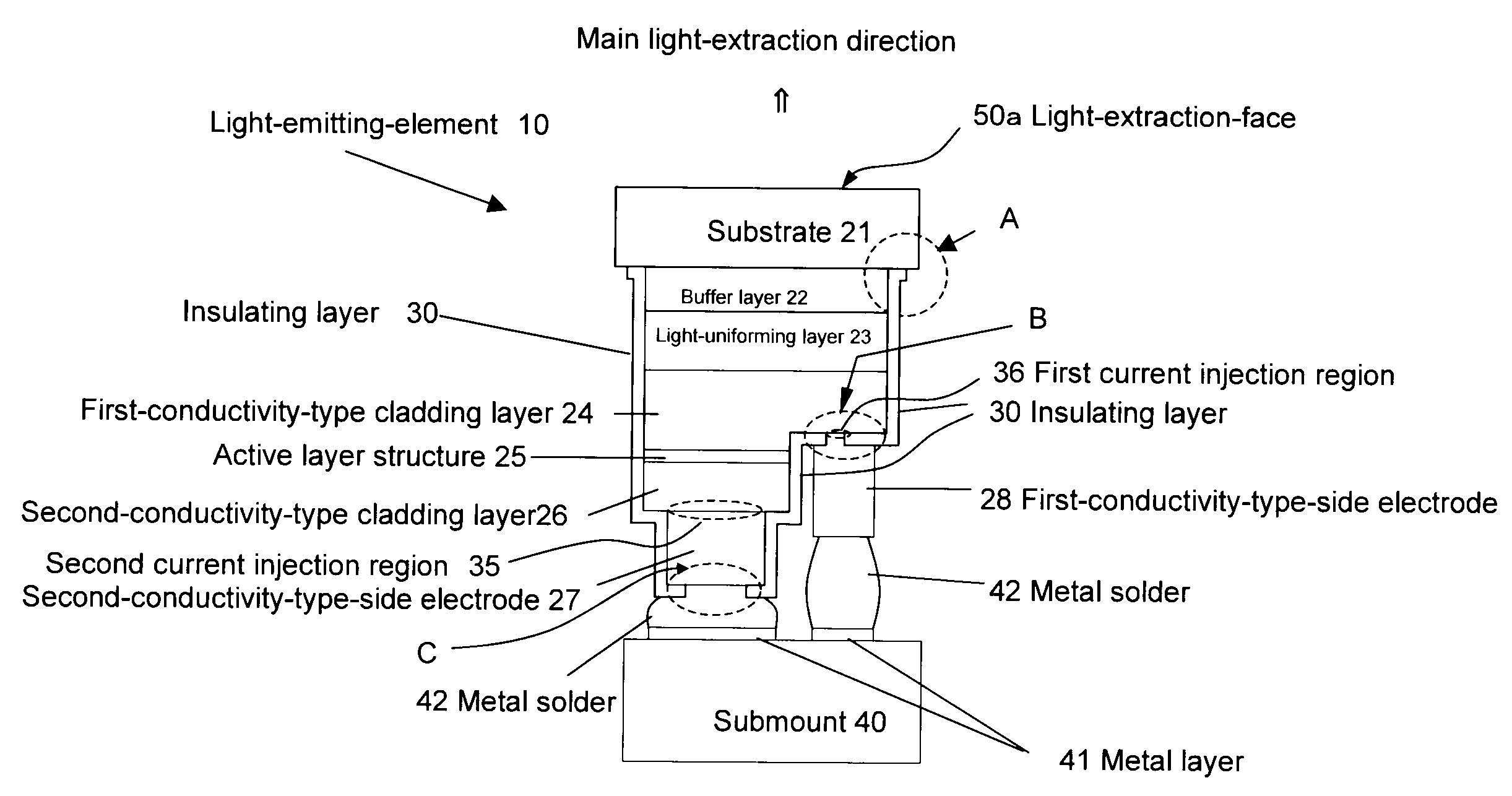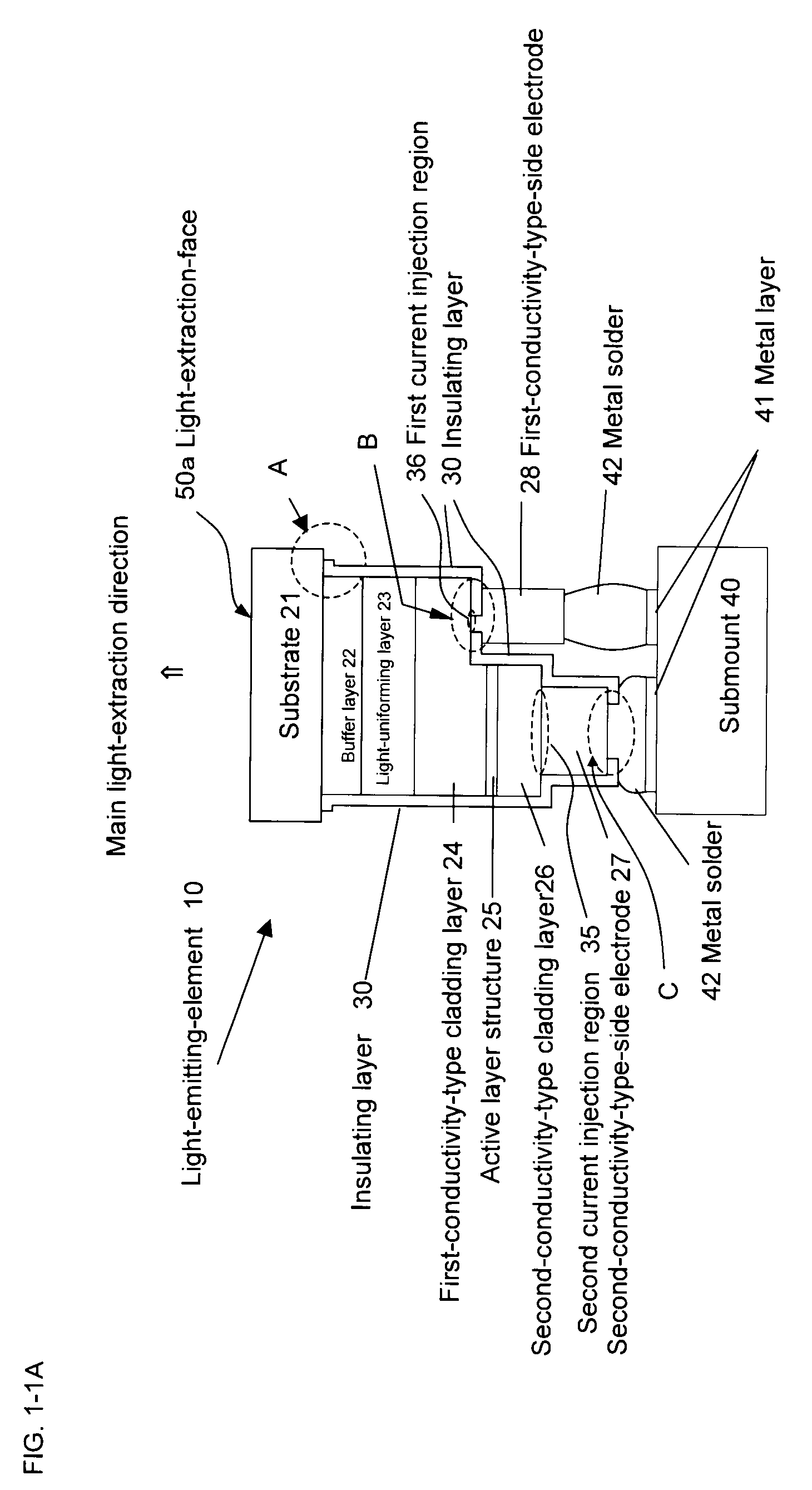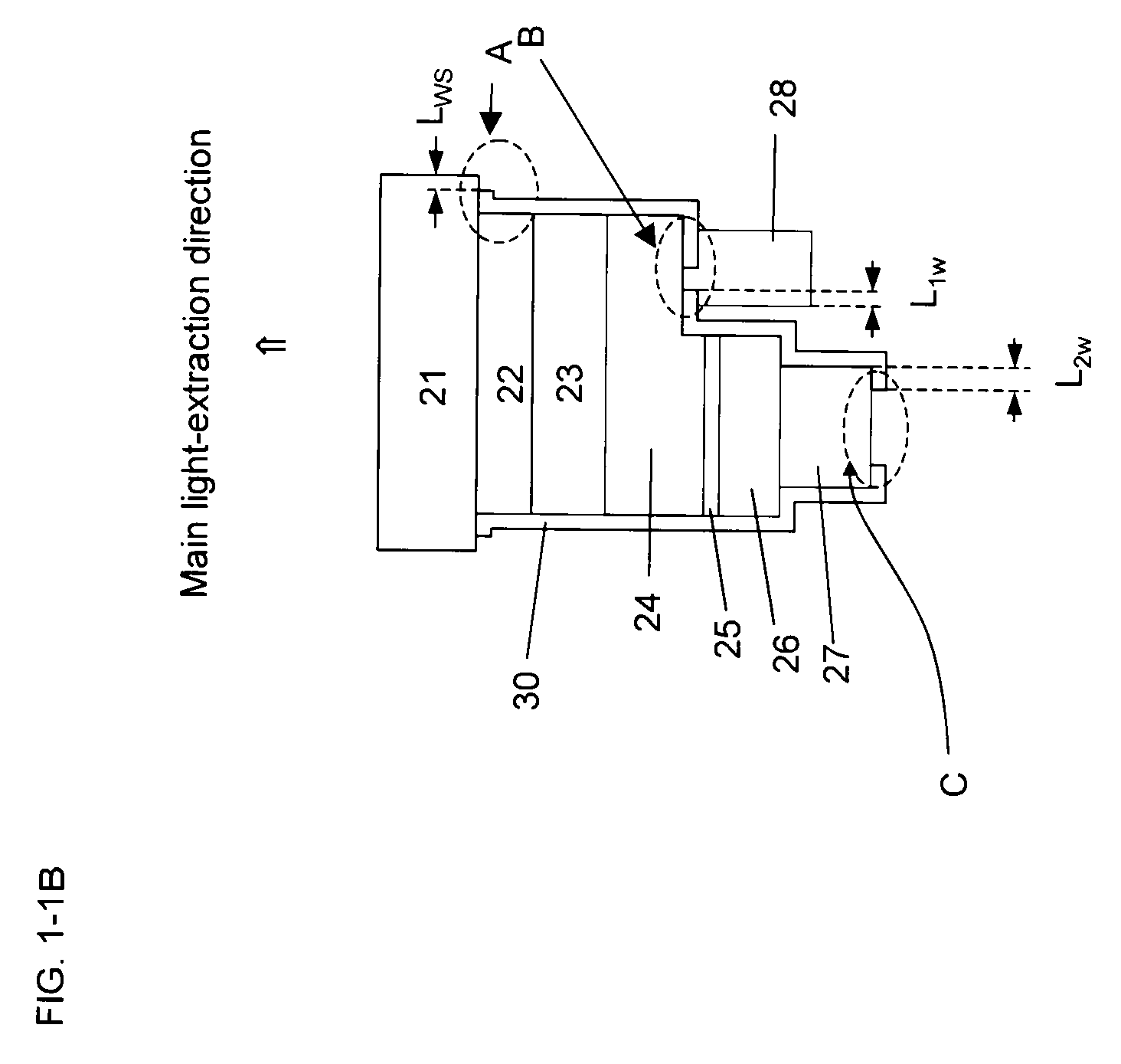Semiconductor light-emitting device
a technology of semiconductors and light-emitting devices, applied in the field of semiconductor light-emitting elements, can solve problems such as improved output and efficiency, and achieve the effects of improving output and efficiency, improving light-emitting face uniformity, and inadequate resistance to large power inputs
- Summary
- Abstract
- Description
- Claims
- Application Information
AI Technical Summary
Benefits of technology
Problems solved by technology
Method used
Image
Examples
embodiment 1
of a Manufacturing Process
[0684]In Embodiment 1 of a manufacturing process, there will be described mainly a process for manufacturing a light-emitting-element shown in FIG. 4-1A and furthermore those for light-emitting-elements shown in FIG. 4-1C. As shown in FIG. 4-5, first a substrate 21 is provided and over the surface are sequentially deposited a buffer layer 22, a first-conductivity-type cladding layer 24, an active layer structure 25 and a second-conductivity-type cladding layer 26 by thin-film crystal growth. For formation of these thin-film crystal layers, MOCVD is preferably employed. However, it is possible to use MBE, PLD, PED, VPE and LPE processes for forming all or some of the thin-film crystal layers. A configuration of these layers can be appropriately changed, depending on, for example, an application of the element. After forming thin-film crystal layers, a variety of processings are allowed. As used herein, the term “thin-film crystal growth” includes heat-treatm...
embodiment 2
of a Manufacturing Process
[0723]In Embodiment 2 of a manufacturing process, there will be described mainly a process for manufacturing a light-emitting-element shown in FIG. 4-2A and furthermore those for light-emitting-elements shown in FIG. 4-2C. Embodiment 2 is conducted as described in Embodiment 1 until the step of forming an insulating layer 30 (FIG. 4-5 to FIG. 4-8). Then, in Embodiment 1, only a region including the center of a light-emitting-element separation-trench of the substrate surface (a trench bottom surface) while in Embodiment 2, as shown in FIG. 4-9B, all the insulating layer 30 over the substrate 21 (that is, the trench bottom surface) within the light-emitting-element separation-trench 13 is removed and the substrate-side (that is, the trench bottom surface side) insulating layer formed on the sidewall within the trench is removed to form a part without an insulating layer 15. The following process may be used as a formation process. First, a resist mask having...
examples
[0928]There will be described the present invention with reference to examples. Materials, amounts, proportions, specific processes and process orders in the following examples may be appropriately modified without departing from the scope of the invention. The scope of this invention should not be interpreted to be limited to the specific examples described below. Furthermore, in the drawings referred in the following examples, some sizes are deliberately changed to help understanding the structures, but practical dimensions are as indicated in the following description.
Examples of the Invention in Relation to Section A
PUM
 Login to View More
Login to View More Abstract
Description
Claims
Application Information
 Login to View More
Login to View More - R&D
- Intellectual Property
- Life Sciences
- Materials
- Tech Scout
- Unparalleled Data Quality
- Higher Quality Content
- 60% Fewer Hallucinations
Browse by: Latest US Patents, China's latest patents, Technical Efficacy Thesaurus, Application Domain, Technology Topic, Popular Technical Reports.
© 2025 PatSnap. All rights reserved.Legal|Privacy policy|Modern Slavery Act Transparency Statement|Sitemap|About US| Contact US: help@patsnap.com



